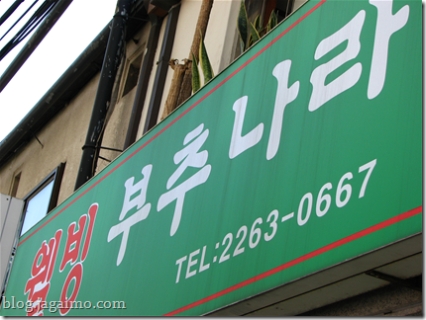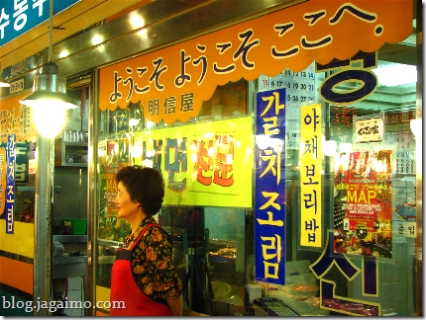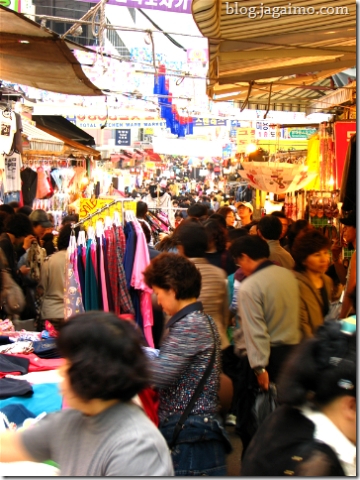My last reasonably complete meal in Seoul was a late lunch last Thursday... Somehow, after a week of sleeping six hours a night I didn't have quite the energy level required to search for something more substantial, and I was only moderately hungry that night... I ended up just grabbing an overpriced smoothie and some more of those addictive but deadly hoddeok.
Anyway, Thursday afternoon I found this little spot, Waelbing Buchu Nara, just a short stretch from Namsangol Hanok Village. It's extra tiny, and only has room for a bit more than a dozen people to sit. But I was drawn in because of the short, simple, reasonably healthy-looking menu. More importantly, they had gimchi-jeon (kimchi jeon), which is one of the few vegetarian-ish jeon I hadn't indulged in on this trip.
The restaurant offered up a few simple banchan, though I skipped the one that involved a bunch of fried tiny fish.
Mu gimchi
Common enough, but this pretty daikon kimchi was quite nice.
Minari
I might be wrong about this, but I believe this is minari, similar to garlic chives.
Kong namul guk
The jeon comes with a bean sprout soup... It's fairly strongly seasoned with bits of what appears to be dried mackerel. Thanks to my vegetarian habits, it was a bit difficult to for me to eat much of this, but it was a nice touch.
The main event
I ate way more of this than I should have... but the kimchi jeon was pretty nicely done. On previous trips to Korea, at a couple of restaurants the kimchi jeon I've had somehow seemed slightly undercooked. I think that owed itself to the complexity of identifying how well cooked a very uneven batter covering copious amounts of kimchi might be.
At Waelbing Buchu Nara, however, I was pleased with my order. The surface of the jeon just teeters on crispness, while the pancake itself is almost fluffy. The kimchi adds a lot of flavor without being overwhelming.
Even with my almost nonexistent Korean ability I was able to make myself reasonably well understood, and they understood my badly worded request to make sure the jeon was devoid of meat. (It's not all that common to add pork or seafood to this type of jeon, but some places might).





















































